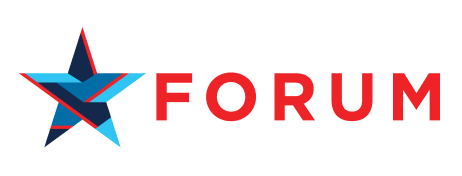Arturo Castellanos Canales
In the United States, there are only five available workers for every nine job openings. This labor deficit, which has persisted since mid-2021, is also reflected in the U.S.’s low unemployment rate— 3.7% as of December 2023. While low unemployment traditionally reflects a strong economy, it can also be the symptom of an economy that is not growing to its full potential due to a lack of workers. In the case of the United States, the labor shortage is partly due to a decline in the labor force participation rate, with approximately 1.7 million workers “missing” from the U.S. workforce compared to what would be expected pre-pandemic, with shortfalls from the trendline seen prior to February 2020.
While the lack of workers affects many industries across the U.S., key industries have struggled for years to find qualified American workers. Therefore, companies are forced to recruit workers from abroad, resorting to insufficient, obsolete, and often burdensome alternatives.
Labor Certification Process
Among the options for American employers who want to hire immigrants who fall within the Second (EB-2) and Third (EB-3) Preference categories for employment immigration visas, the PERM Labor Certification Process is a difficult barrier to overcome. This process – overseen by the Department of Labor (DOL) – is designed to protect the U.S. labor market by requiring employers to establish that there are no able, qualified, and available American workers willing to accept a job offer. Then, employers must demonstrate that hiring the foreign worker “will not adversely affect the wages and working conditions of similarly employed U.S. workers.”
To obtain this labor certification, employers must conduct the following five steps in chronological order:
- Create a full-time position with a title and specific duties;
- Obtain a prevailing wage determination from DOL;
- Conduct a labor market test;
- Submit PERM application to DOL; and
- Hire a foreign worker.
These five steps require a considerable amount of time. On average, the labor certification takes 326 days, but if the application requires an audit, it can take up to 489 days. In addition, the labor certification process can be costly and complicated for many employers who cannot afford experts to oversee it.
Schedule A Occupation List
Given the complexities of the labor certification process, in 1965, the administration of President Lyndon B. Johnson issued a regulation aimed at bypassing the labor certification process for occupations experiencing high labor shortages. The Johnson administration relied on authority provided by the recently-passed Immigration and Nationality Act of 1965 to provide visas to “qualified immigrants who are capable of performing specified skilled or unskilled labor, not of a temporary or seasonal nature” for occupations experience labor shortages. The regulation, named Schedule A, permitted the Secretary of Labor to maintain a list of pre-certified occupations that would be exempt from the labor certification process.
Notably, the Schedule A list changed numerous times between 1969 and 1990 to adapt to the needs of the labor market. However, between 1990 and 2005, the occupational list did not change substantially. And since 2005, Schedule A has not changed at all. As it stands, Schedule A only includes physical therapists, professional nurses, and people of exceptional ability in the sciences or the arts.
Calls to Update Schedule A
There is a growing appetite among policymakers and immigration advocates to update the Schedule A list to include occupations in key economic areas facing acute labor shortages where immigrant workers are particularly numerous. Notably, updating Schedule A would not expand the number of visas available for immigrant workers. It would just simplify and expedite the hiring of foreign workers in areas with significant worker shortages. The vast majority of the initiatives calling to update the Schedule A list focus on expanding occupations in the fields of science, technology, engineering, and mathematics (STEM).
According to a recent study published by DOL’s Bureau of Labor Statistics, occupations in the STEM sector – which up to 2021 employed 10 million workers – are projected to grow 11% by 2031, more than twice the rate of other occupations. While this is good news for the development of the United States, the STEM sector is already struggling with labor shortages. Immigrants already make up around 24% of the total of workers in the STEM sector. And considering the slow population growth of the United States, it will be difficult to cover all the available STEM positions without the help of immigrants. In a recent report, the Semiconductor Industry Association projected that the U.S. economy would create 3.85 million additional positions in the STEM sector and that more than one-third of those positions would go unfilled due to a shortage of workers.
Conclusion
Updating Schedule A is a simple yet valuable alternative for the Biden administration to create a less bureaucratic environment for many employers who are struggling to hire workers. Instead of forcing employers to go through a long and costly process to hire permanent workers, DOL could pre-certify that there are insufficient qualified and available American workers in STEM fields, and that immigrant workers in STEM fields will not adversely affect American workers’ wages and working conditions.


